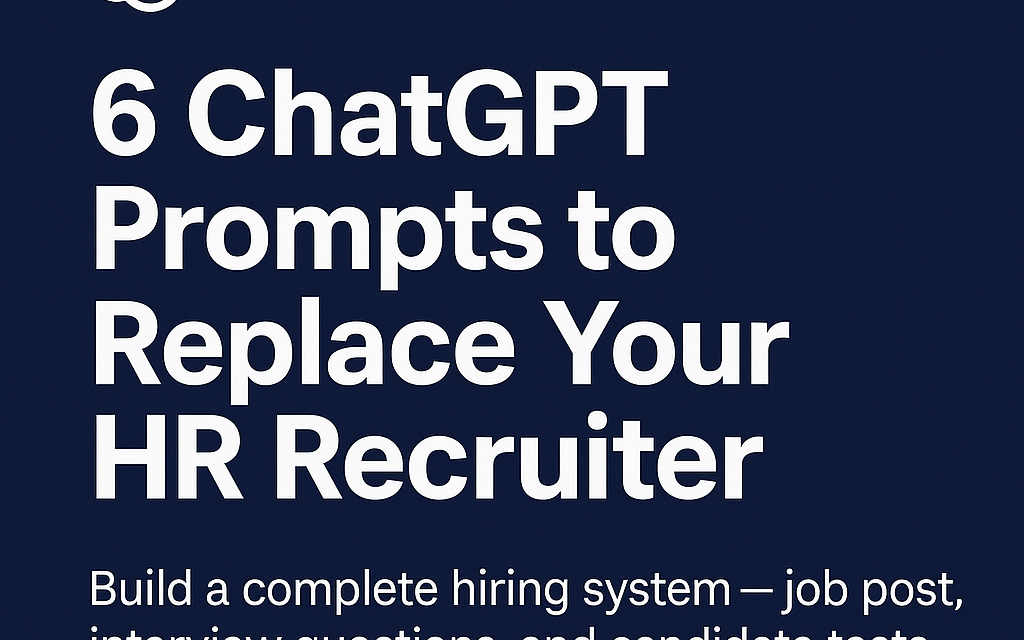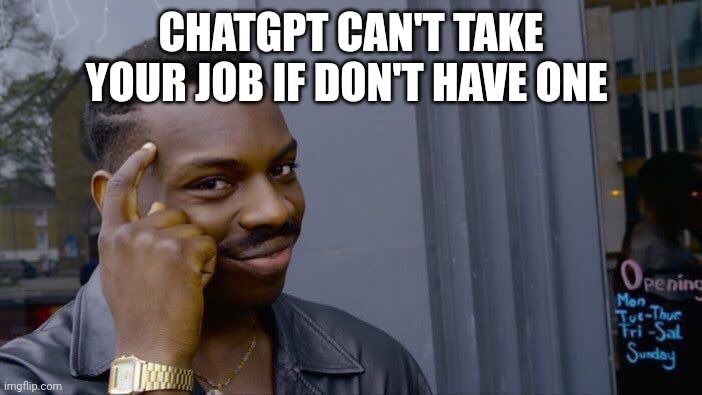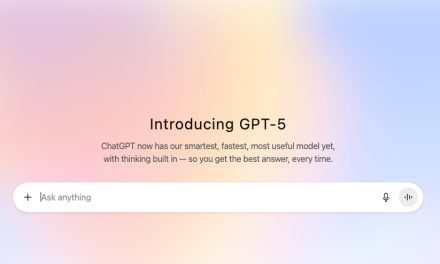[[{“value”:”
Hey AI Break fam 👋 Luis & Rui here!
Spent hours writing a job post only to realize you’re not even sure what role you actually need?
You’re not alone. Most founders hire on gut feel instead of structure.
Today we’ll show you how to use ChatGPT to turn that chaos into a repeatable system that writes the job spec, interview questions, and candidate test for you.
Grab your coffee, this one’s a big win for busy founders ☕
🌟 The Goal
Today you’ll learn how to turn ChatGPT into your AI HR department that can:
✅ Write your job description in your brand’s voice
✅ Generate structured interview questions
✅ Create a real-world candidate test
✅ Score applicants objectively
By the end, you’ll have a repeatable AI hiring system that works for any role.
Step 1: Define the Role Clearly
Start by helping ChatGPT understand your company and the role you want to fill.
Prompt 1: Define the Role
#role: HR strategist #task: Define the ideal role based on my business goals. #context: I’m hiring a new team member for [insert department, e.g. marketing / operations / sales]. Ask me 10 targeted questions to clarify: - What are the main responsibilities? - What goals will this person own? - What tools or platforms will they use? - What experience level do I expect? - What soft skills or culture fit matter most? #tone: Professional, structured, consultative
After answering, save the result as [Prompt 1 Output: Role Overview] for the next steps.
Step 2: Write the Job Description
Use your role overview to create a clear, attractive job post.
Prompt 2: Job Description Builder
#role: Recruiter & copywriter #task: Write a complete job description using the details from [Prompt 1 Output: Role Overview]. #structure: - Position title: [insert title] - Company intro: [insert 1-line summary of your company and mission] - Responsibilities (5–7 bullets) - Requirements (skills, tools, and experience) - Culture fit / mindset - Success metrics after 6 months #tone: [choose: friendly, corporate, startup, creative]
Pro Tip: Ask ChatGPT to “rewrite this for LinkedIn” or “make it sound like a YC startup” to match your tone.
Step 3: Create Structured Interview Questions
Next, generate high-quality interview questions with strong and weak answer examples.
Prompt 3: Interview Playbook
#role: Senior interviewer #task: Create 10 interview questions for the role described in [Prompt 1 Output: Role Overview]. #structure: - 4 technical questions - 3 behavioral questions - 3 culture-fit questions For each, include: - “Strong answer” (ideal response traits) - “Weak answer” (red flags) #tone: Clear, structured, unbiased
Now you have a full interview guide that keeps your process consistent.
Step 4: Design a Practical Skills Test
This step separates talkers from doers.
Prompt 4: Candidate Test Generator
#role: Hiring manager #task: Design a 30–45 minute practical task for this role. #context: Use the information from [Prompt 1 Output: Role Overview]. #structure: 1. Test title 2. Objective (what it measures) 3. Instructions for the candidate 4. Evaluation criteria (what good looks like) 5. Scoring rubric (1–10 scale) #tone: Clear, fair, practical
Example:
For a Marketing Manager → “Create a 1-week launch plan for a new product.”
For a Developer → “Debug this short code snippet and explain your logic.”
Step 5: Build a Candidate Scorecard
Create a clear evaluation system you can reuse for every applicant.
Prompt 5: Candidate Scorecard
#role: HR analyst #task: Build a candidate evaluation table for the role in [Prompt 1 Output: Role Overview]. #structure: | Category | Description | Weight (%) | Rating (1–5) | Notes | |-----------|--------------|-------------|---------------|-------| Include categories such as: - Technical skills - Communication - Culture fit - Problem-solving - Test performance #tone: Objective, measurable, easy to use
Copy the table into Google Sheets or Notion to use during interviews.
Step 6: Score and Compare Candidates
Now let ChatGPT evaluate each candidate objectively.
Prompt 6: Candidate Evaluator
#role: You are an expert Recruiter #task: Evaluate this candidate based on the scorecard from [Prompt 5 Output: Scorecard]. #context: Candidate summary: [paste resume or test results] #structure: 1. Strengths 2. Weaknesses 3. Culture fit comments 4. Final score (1–10) 5. Hire / No hire recommendation #tone: Objective, concise
To compare multiple candidates, say:
“Create a comparison table using the final scores of each candidate.”
Master Prompt: AI Hiring System (Full Workflow)
“}]] Read More in The AI Break






